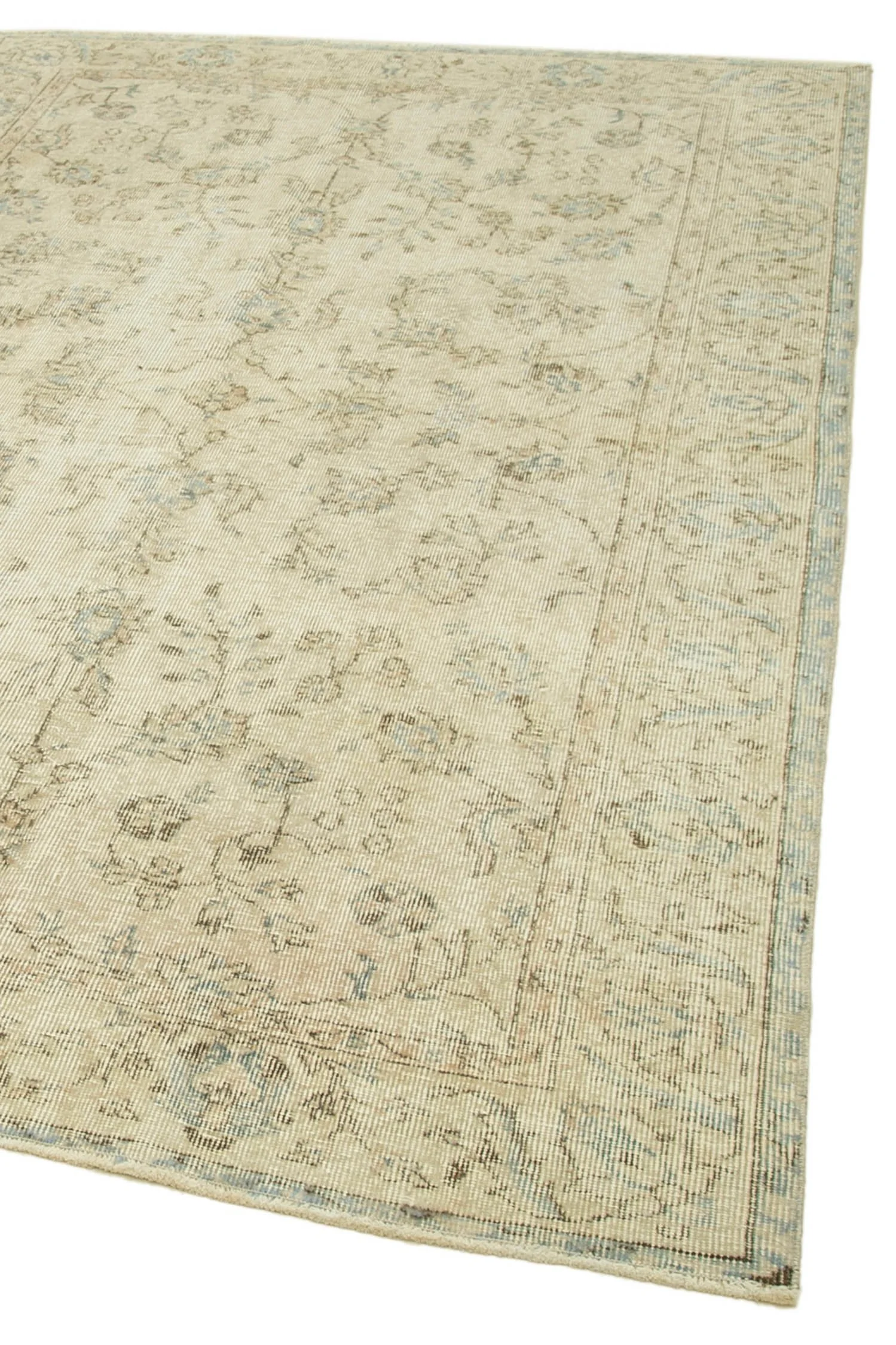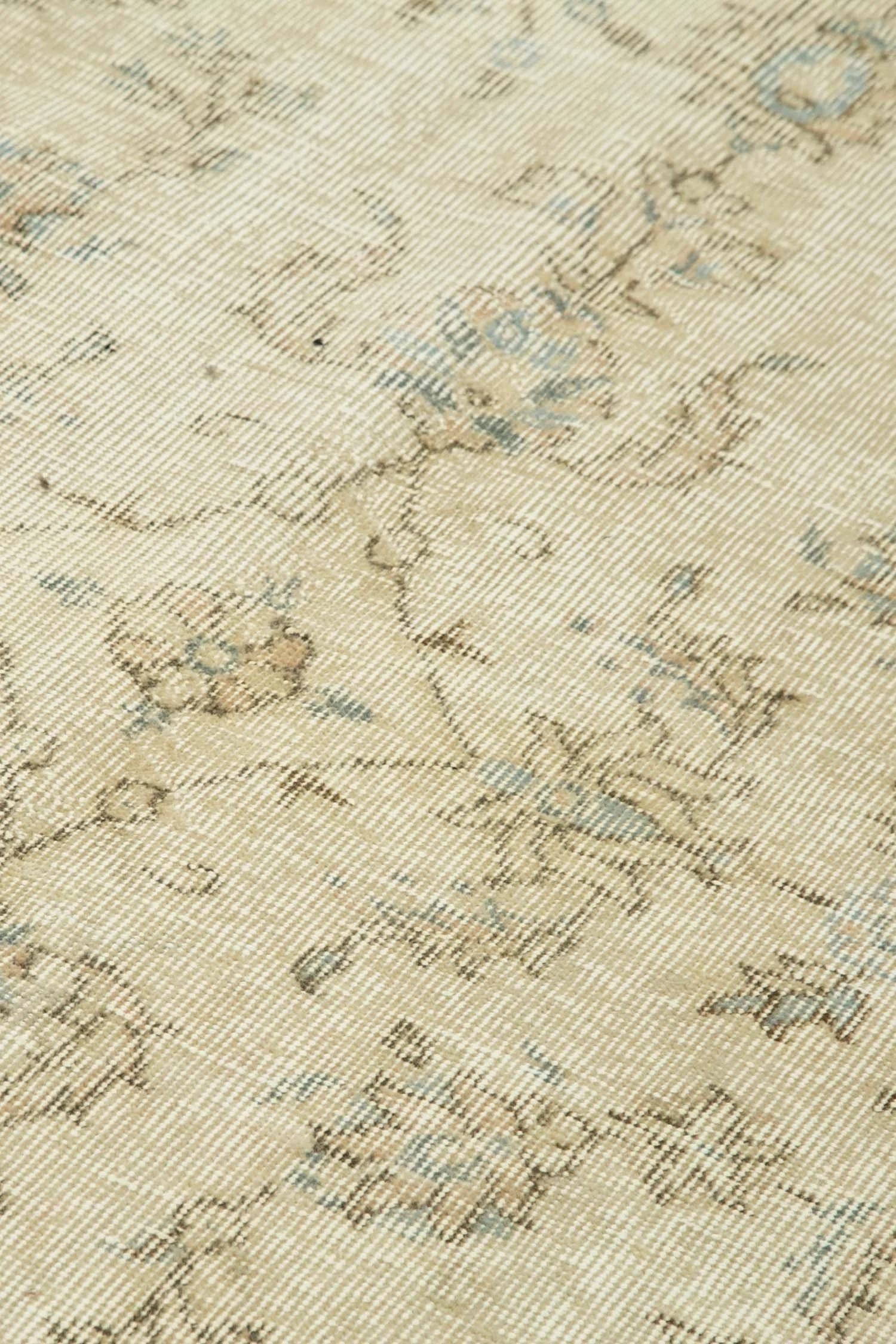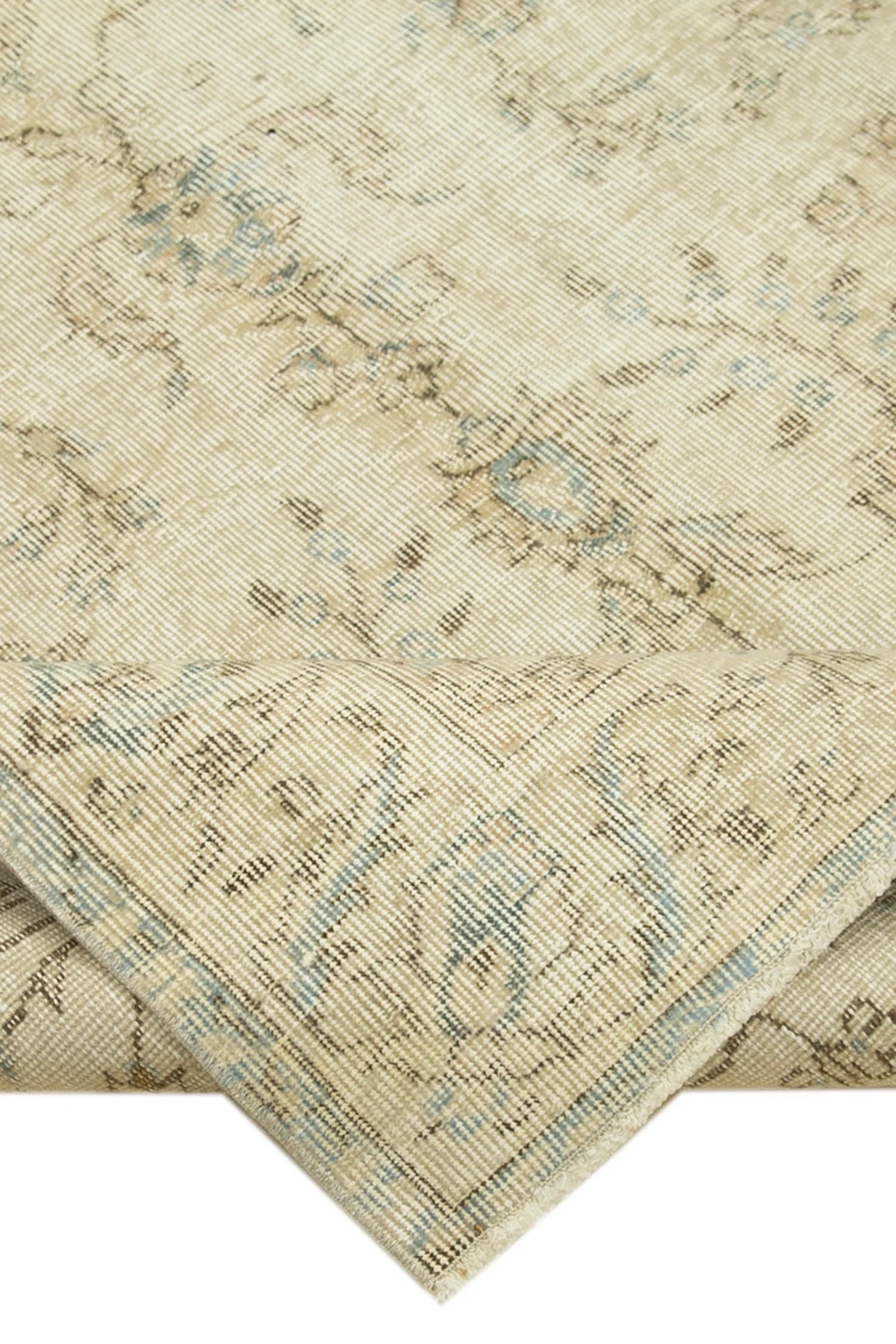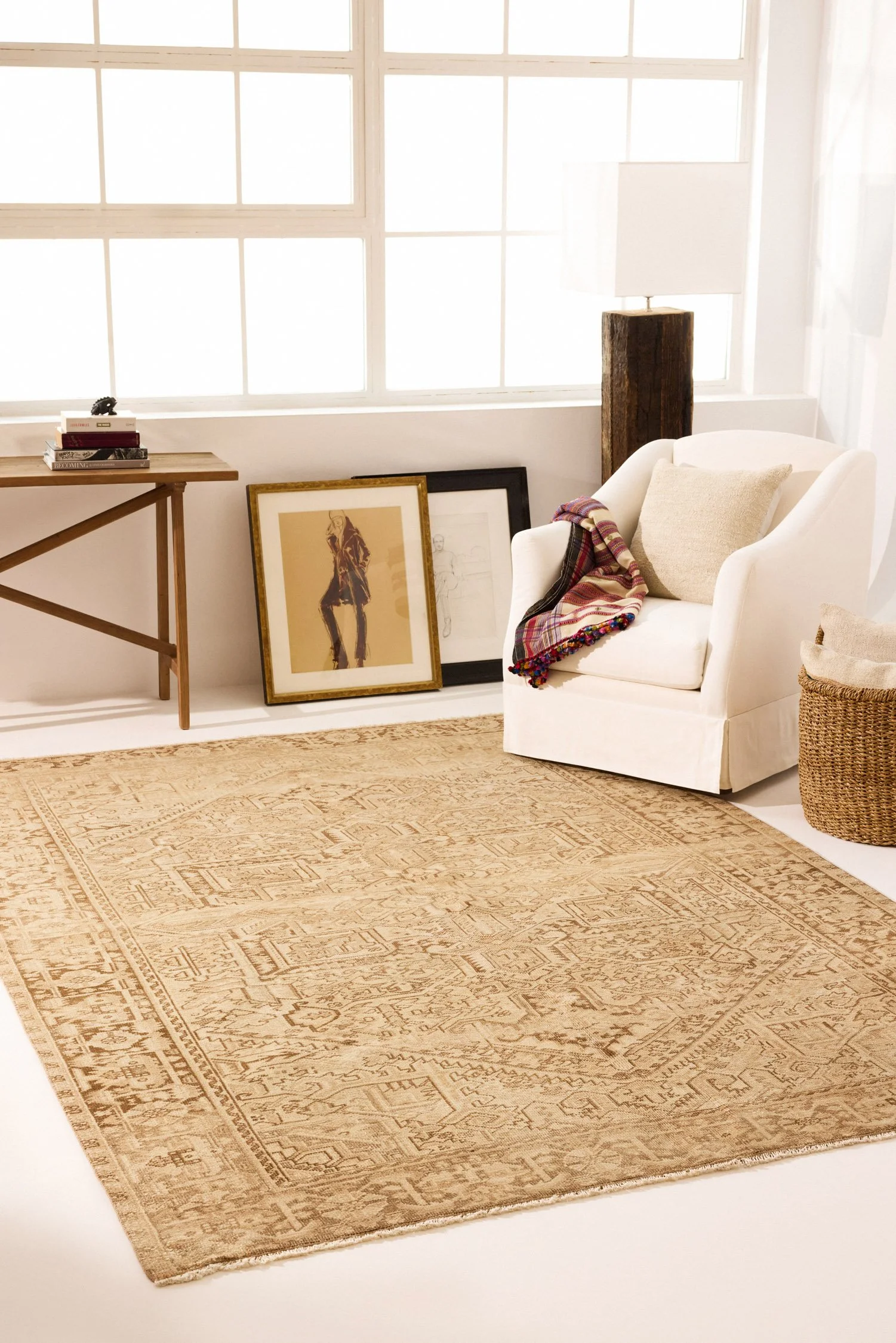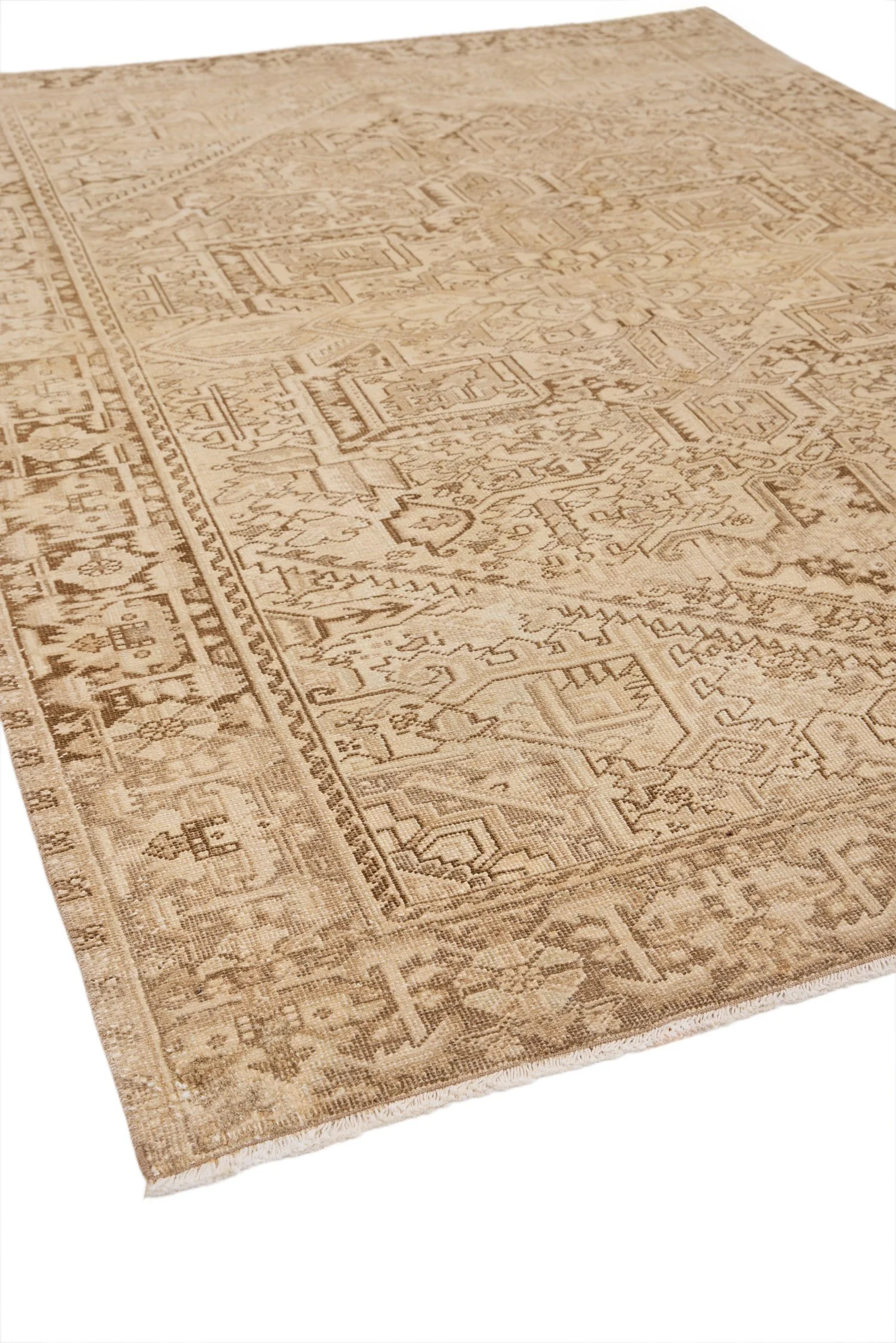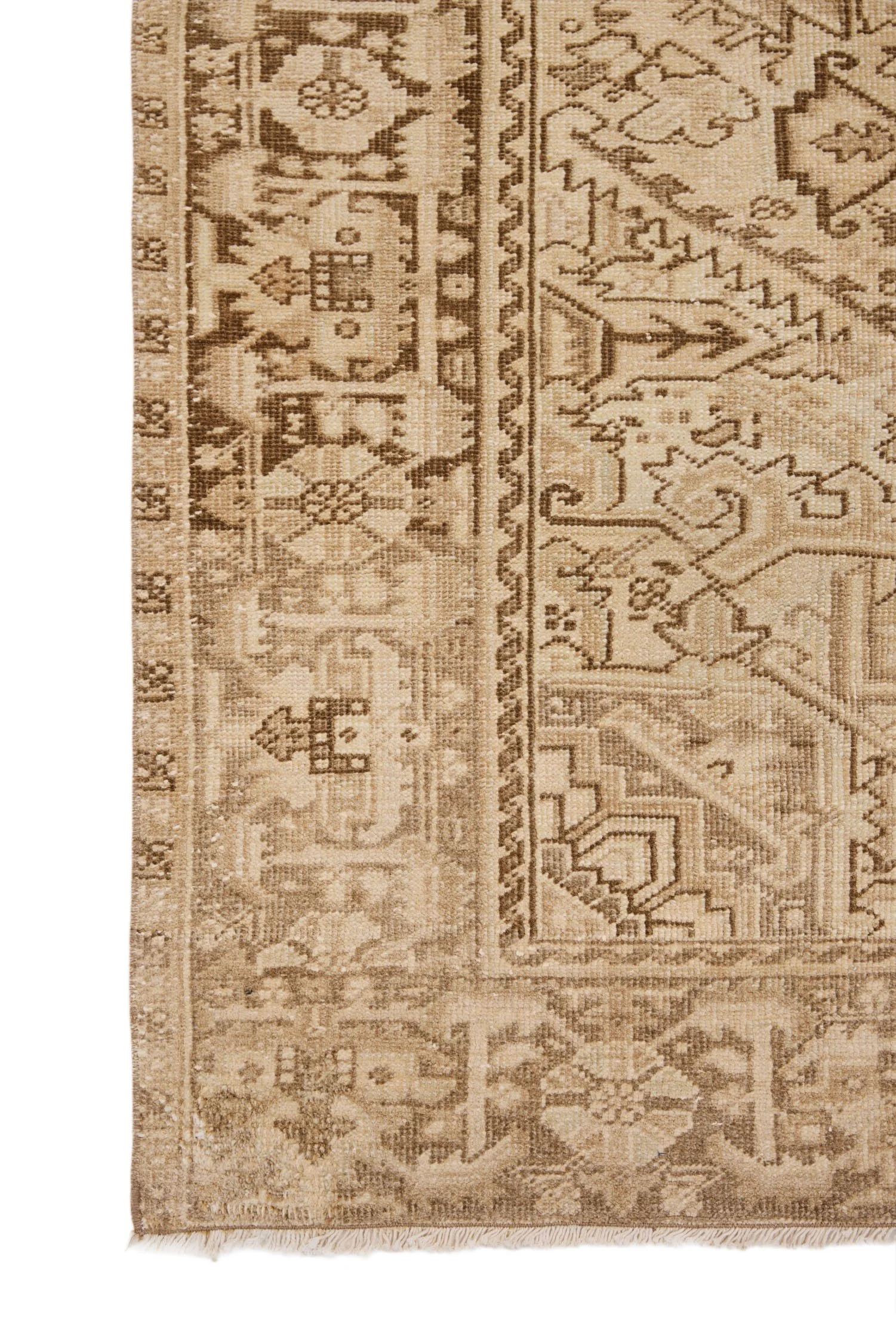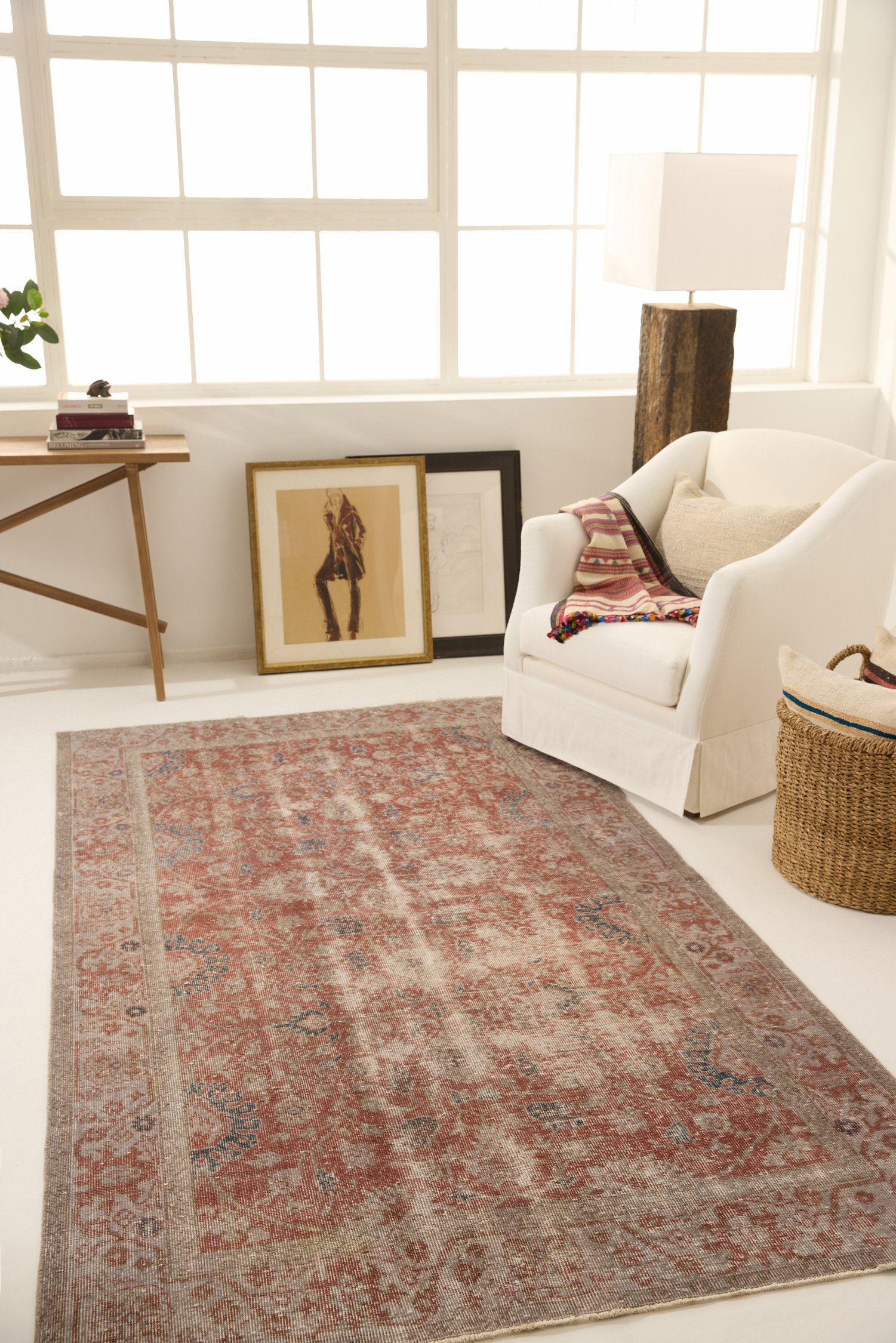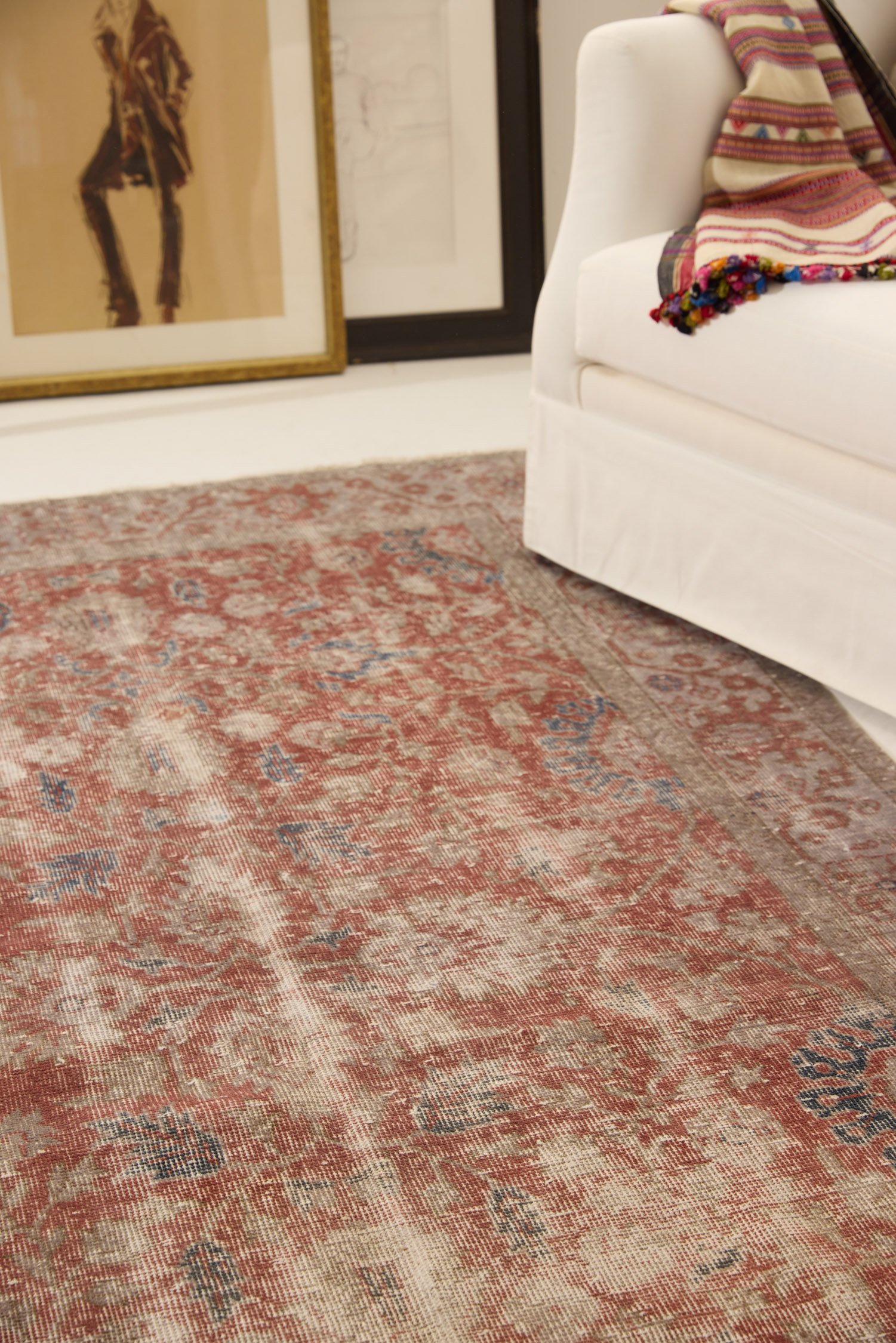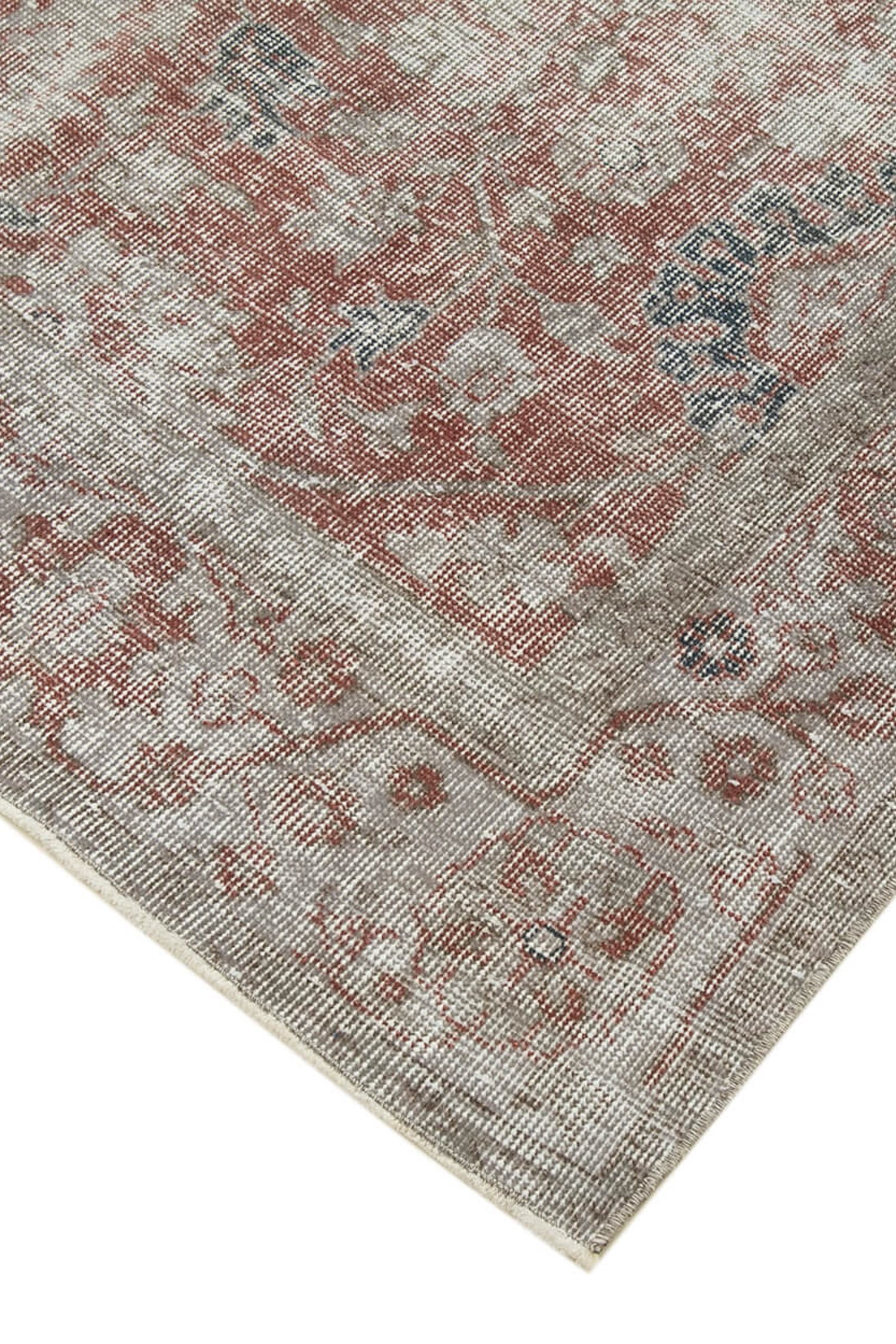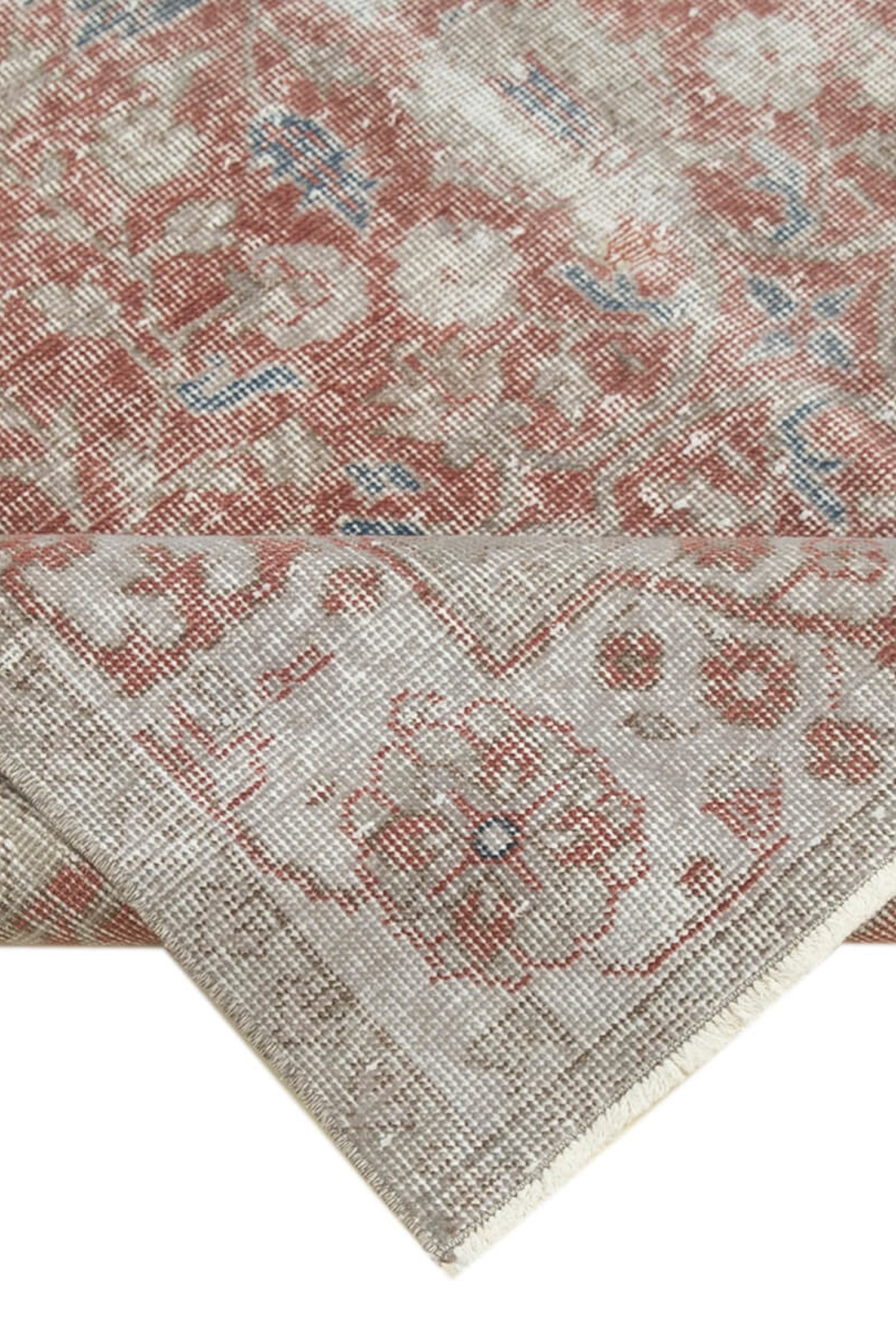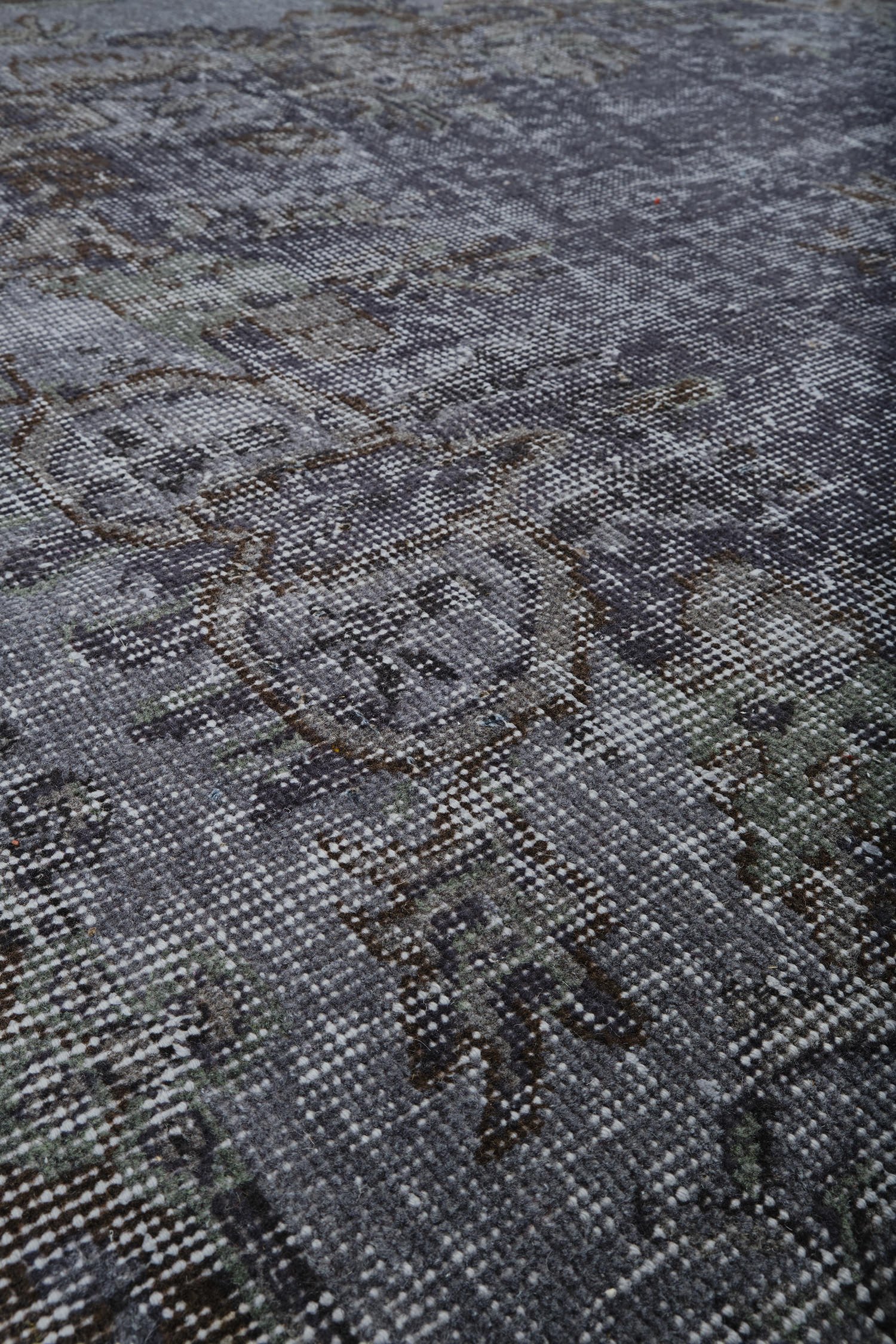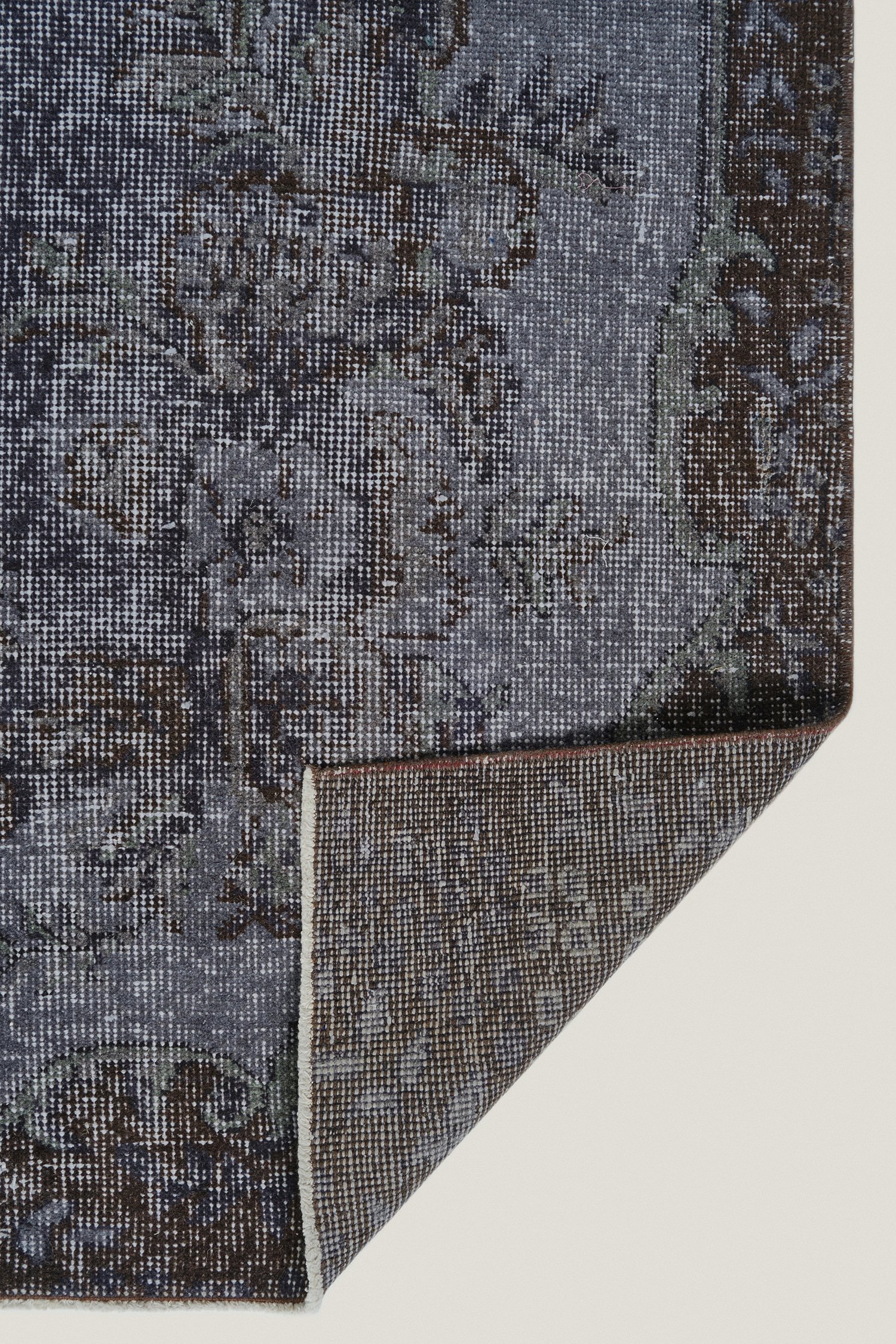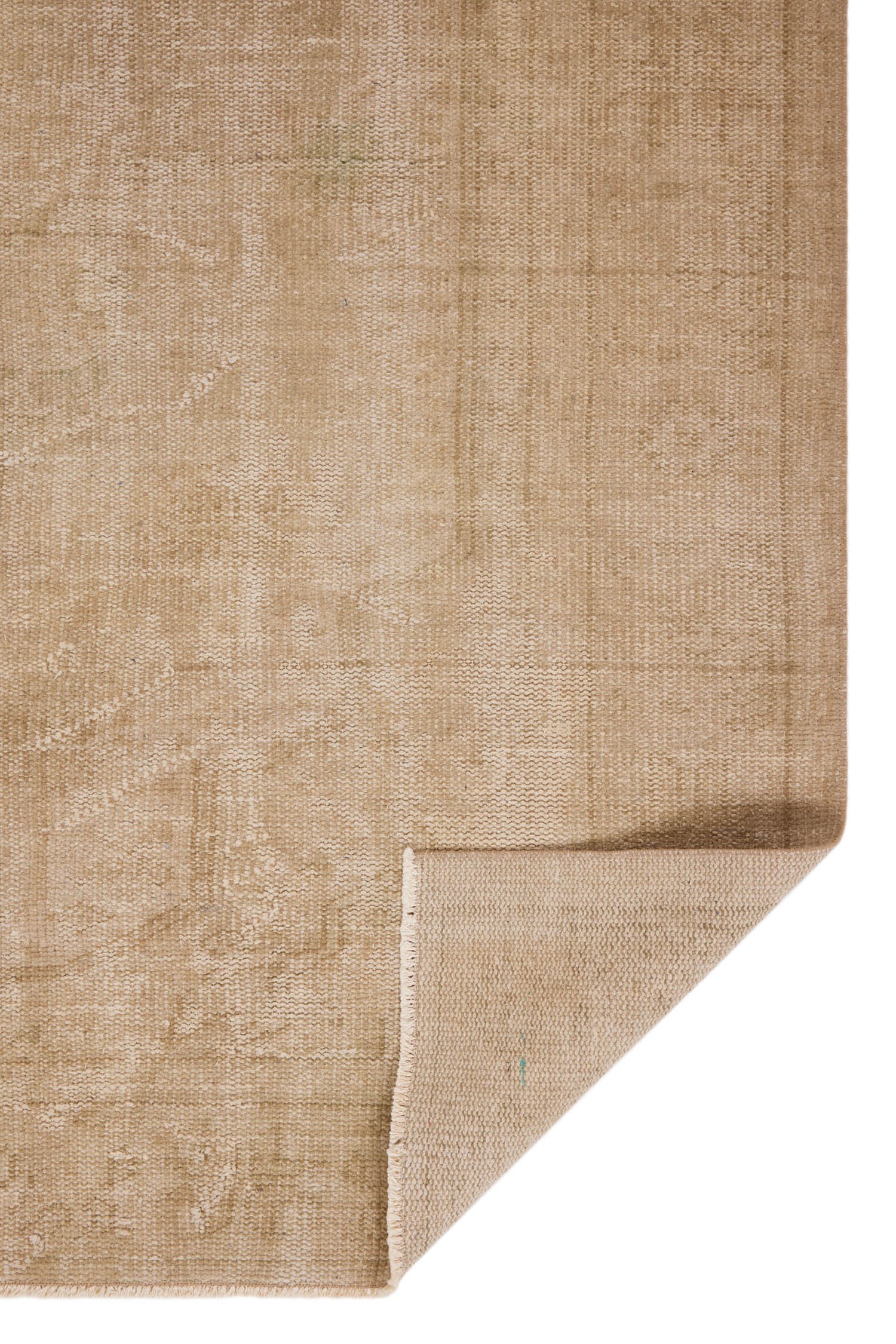Heritage and Craftsmanship
The Isparta region developed its weaving reputation through generations of artisans who blended classical Persian-inspired aesthetics with distinctly Turkish sensibilities. These rugs emerged from a tradition that valued refinement and balanced composition, creating pieces that served both practical and aesthetic purposes in homes throughout Anatolia and beyond.
Design Elements
Delicate floral tracery covers the field in an allover pattern that speaks to Isparta's characteristic approach to design. Rather than bold, graphic statements, these florals unfold gradually across the surface, their softened outlines creating a sense of movement and depth. The narrow scrolling border frames the composition with restraint, allowing the field's gentle complexity to remain the focal point. Time has worked as a collaborator here, distressing the surface in ways that enhance rather than diminish the overall effect. Where colors once made sharper distinctions, they now blend into one another, creating transitions that feel organic and unforced.
Placement
The 5' 1'' x 8' 1'' format works naturally in bedrooms, entryways, or beneath dining tables in smaller spaces. Its neutral palette and distressed character adapt to interiors that value patina and authenticity over pristine perfection. The beige and taupe foundation provides flexibility in styling, while the soft blue accents offer enough visual interest to anchor a room without demanding attention.
Care Recommendations
To preserve the rug's character:
Rotate periodically for even wear
Vacuum regularly using a suction-only setting
Address spills immediately by blotting, never rubbing
Professional cleaning recommended annually
Avoid direct sunlight to maintain color integrity
Turkish Isparta rugs from this era carry a particular aesthetic that bridges formal and relaxed sensibilities. Their refined floral compositions bring a layer of visual sophistication to contemporary spaces, while their time-worn surfaces feel lived-in rather than precious. These pieces work especially well in interiors that embrace imperfection as character rather than flaw.






